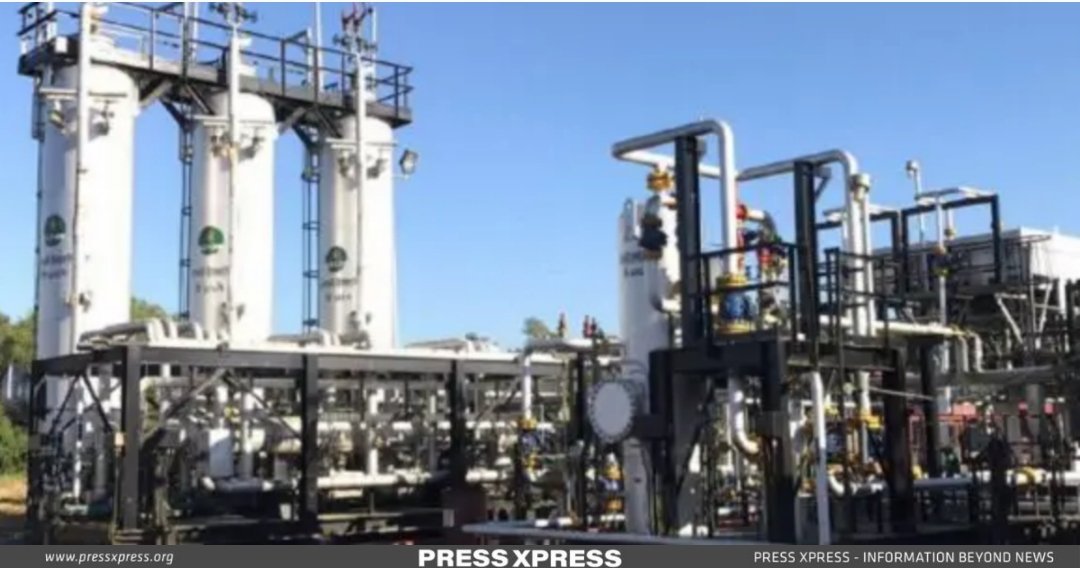Key highlights:
- IEEFA’s report on the electricity sector indicates 49% of Bangladesh’s power comes from natural gas, while furnace oil and coal contribute 32% and 11%
- Sylhet witnessed a recent discovery of oil and gas reserves in December 2023, capable of producing 500-600 barrels of crude oil daily
- Offshore hydrocarbon exploration is thriving in the Bay of Bengal in India, Myanmar, Malaysia, and Vietnam
According to Foreign Minister Hasan Mahmud, a significant energy reservoir has been uncovered in the Bay of Bengal by a U.S. company. This revelation emerged during separate discussions with envoys Peter Haas of the United States and Charles Whiteley of the European Union on 17 January 2024.
You can also read: Export Product Diversification Boosting Bangladesh’s Economic Growth
In July 2014, Bangladesh struck gold in the energy sector, securing rights to a vast expanse of natural gas-rich waters – 20,000 square kilometers, to be exact – following a U.N. territorial arbitration that favored them over India.
Grateful for the enduring partnership with the United States, Mahmud expressed his thanks to Mr. Haas, highlighting the U.S.’s crucial role as a development partner since Bangladesh’s independence.
What Does the Latest Discovery Mean for Bangladesh’s Energy Future?
America’s discovery of an energy reservoir in the Bay of Bengal prompts inquiries into the unexplored natural gas reserves in Bangladesh. As one of the largest deltas, Bangladesh possesses the complete potential to exploit its gas discoveries.
Bangladesh presently produces electricity through the utilization of native natural gas, both domestic and imported coal, imported oil, imported LNG, Biomass, hydropower, and solar power. A report by the Institute for Energy Economics and Financial Analysis (IEEFA) assessing the transition in the electricity sector suggests that 49% of the nation’s electricity is derived from natural gas, with furnace oil and coal contributing 32% and 11% respectively to the overall electricity production in Bangladesh.

The Bangladesh Oil, Gas, and Minerals Corporation (Petrobangla) reported that the nation holds 29 gas fields, including the Ilisha gas field in Bhola. Out of the proven and probable (recoverable) gas reserves totaling approximately 29.54 TCF, 20 TCF has already been extracted.
A recent discovery of new oil and gas reserves occurred in Sylhet in December 2023, capable of producing 500-600 barrels of crude oil per day. Oil presence was confirmed at a depth of 1,397-1,445 meters. Additionally, gas deposits were found at various depths, with the largest reserve yielding 25 million cubic feet of gas flow at a flowing pressure of 3,250 pounds per square inch (PSI).
According to officials from the state-run Oil, Gas, and Mineral Corporation (Petrobangla), the reserves, valued at around 850 billion taka (over 7 billion U.S. dollars), may be usable for more than 15 years.
Currently, Bangladesh is producing about 2,300 million cubic feet of gas per day from 21 gas fields, while approximately 700 million cubic feet of gas per day is being imported from abroad to meet the market demand.

Bay of Bengal’s Anticlinal Marvels and Hydrocarbon Riches
The Bay of Bengal offshore region is a classic illustration of expansive anticlinal structures featuring both structural and stratigraphic traps. Moving from the India-Myanmar border westwards to the subsurface center, Bangladesh exhibits elongated anticlines serving as structural traps, housing the majority of the country’s proven natural gas reserves.
The gentle anticlines to the west harbor channel-cut sediments, serving as exemplary instances of stratigraphic traps. Despite the western region lacking potential for structural traps, it holds significant promise for stratigraphic traps and unconventional hydrocarbon systems, necessitating thorough exploration.
Expert Opinion

Assistant Professor Department of Geology and Mining
University of Barishal
One of the most common and diverse traps created by deformation are structural traps, which include anticlines and fault closures. The Bengal Basin, a foreland basin created by the collision of the Indian and Eurasian plates, contains most of Bangladesh’s natural gas reserves. The complicated tectonic history of the Bengal Basin is typified by the existence of multiple structural traps, including fault blocks and faulted anticlines. These traps have contributed significantly to the concentration of natural gas reserves in Bangladesh. The Bangladesh Petroleum Exploration and Production Company (BAPEX) has discovered 29 gas fields, of which the Bhola gas field was the latest. Almost all the discovered gas fields have been found in structural traps except the Bhola gas field, which is a combinational trap. Natural gas is produced from the source rocks and migrates into these structural traps because of the existence of a seal rock, which serves as a reservoir for the gas. The Miocene and Pliocene sandstones found in the Bengal Basin’s structural traps contain most of Bangladesh’s natural gas reserves. In Bangladesh, the eastern folded belt, including the Sylhet Basin, Chittagong Hill Tracts, and the Bay of Bengal, has been identified as a potential for hydrocarbon exploration. The deeper portion of the Bengal Basin, such as the Hatia Trough, the Central and Southern parts of the basin, and the Rakhine Sub-basin, are believed to have gravity-controlled folded belts and hydrocarbon traps. Therefore, structural traps have played a significant role and have excellent prospects for preserving natural gas reserves.
In various parts of the Bay of Bengal, such as India, Myanmar, Malaysia, and Vietnam, offshore hydrocarbon exploration is flourishing, in contrast to Bangladesh. The substantial thickness of reservoir-quality sandstone and organic-rich shale at greater depths indicates high prospects for natural gas exploration in this region.
Gas hydrate accumulations have been identified on both sides of the Bangladesh Exclusive Economic Zone (EEZ) in the Indian and Myanmar offshore regions. Seismic profiles reveal seismic traces of gas hydrates near the slope at depths ranging from 1300 to 1900 meters.
Bay’s Seaweed Presents Lucrative Business Avenues
Another survey, jointly conducted by the Maritime Affairs Unit and the Netherlands, revealed the presence of seaweed in the Bay in 2022, showcasing significant commercial potential. Its domestic utilization can reduce import dependency and lead to subsequent exports to the global market.
The research findings indicate that several species of seaweed in Bangladesh possess substantial commercial potential, playing a crucial role in the country’s blue economy.
An expenditure of Tk28,000 crore in Bangladesh encompassed various purposes, including the procurement of ingredients for soaps and shampoos.

If Bangladesh can develop seaweed locally, it has the potential to domestically source ingredients worth Tk16,000 crore, in addition to exporting surplus seaweed production.
In 2020, researchers from the Netherlands, collaborating with representatives of the Maritime Affairs Unit, conducted on-site research in the sea areas of Bangladesh. Based on the results, 220 seaweed species, 347 marine fish species, 498 oyster species, 52 shrimp species, five lobster species, six crab species, and 61 sea-grass species were identified in Bangladesh.

As we stand on the cusp of a potential energy revolution, Bangladesh emerges as a captivating player in the global energy framework. The time is ripe for collaboration, investment, and ventures into the animated topography of Bangladesh, where the ocean houses not only valuable gas reserves but also the prospect of a prosperous and sustainable economic future.


